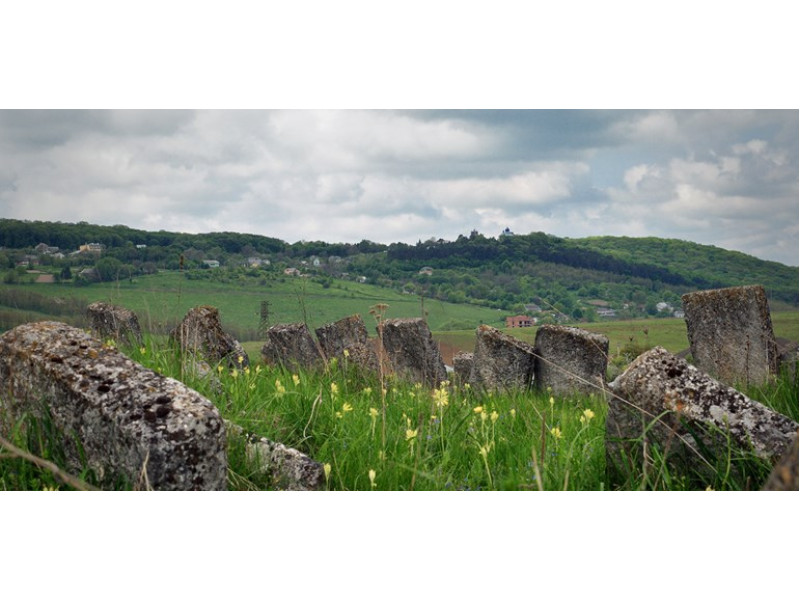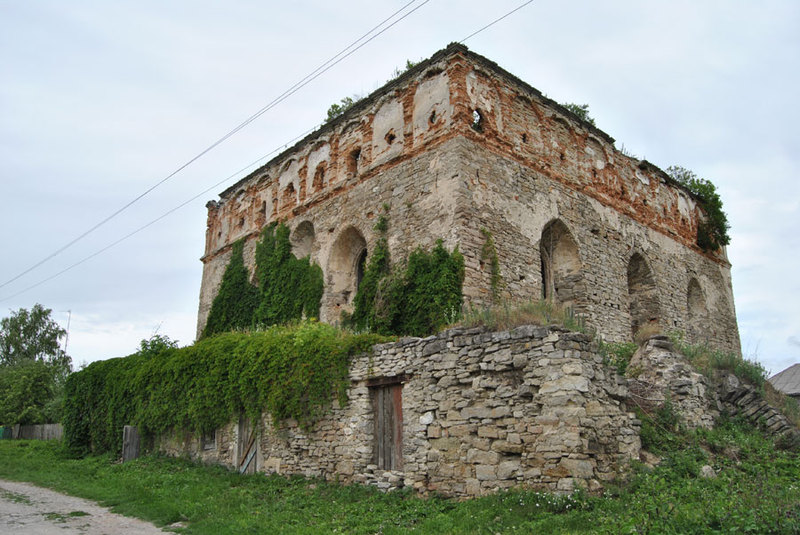A town in Podillia is famous for its unusual name and interesting historical monuments. Usually, when mentioning this region, Kamianets-Podilskyi immediately comes to mind as a city full of history and architectural monuments. However, not only this city can be interesting for a traveler looking for new views, impressions and historical plots. Let's go beyond the usual schemes and routes and learn more about the city of Satanov - why it is called that and what makes it interesting.
Geography
Sataniv is an urban-type settlement located in the Horodotskyi district (Khmelnytskyi region). If you are going to visit this town, the best time to travel is the beginning of May, on numerous weekends, because that is when you can see the mountains covered with dense forests in their richest form.
Origin of the name
There are several versions of why Sataniv was named this way, and according to them it is believed that this name was given to the city by the Romans, Poles, Turks, or Swedes. Ancient Roman coins are still often found near the city, which also gave rise to one of the versions of the origin of the name: "Enough or not? Sat an non?" - the Roman commander allegedly asked, having reached Zbruch and wondering whether to go further. The soldiers, tired from the long march, loudly shouted their desire to stop here, and so a settlement arose, which later grew into a small town. Another version says that the Wallachians called the recently founded village "Satu Nou", which means New Settlement. There is also a Turkish version: they say that the locals fought so stubbornly with the Janissaries that they thought that the devil himself lived in these places. True, there is a flaw in this version: the city bore its name even when the Ottomans were not yet in these parts.
Probably the most plausible version is connected with the word "satan", because paganism lived in these places for a long time after the adoption of Christianity by Russia. People often see evil spirits where they do not accept religion, so, according to some historians, those who lived near such pagan settlements tried to denigrate them, vengefully calling them Satans and Devils, who also fell under the distribution. To enhance the contrast, the nearby villages were called the "correct" Orthodox names: Spasivka, Bogoslovka.
Zbruch
The Zbruch River separates two regions - Khmelnytskyi and Ternopil. Starting from the end of the 18th century, the river was a common border for two empires, the Habsburgs and the Romanovs. Even then, on these very different banks, the foundations of differences in everyday life, traditions, and religion began to be established. The First World War destroyed the empires, but left the border. In 1920, it passed between Poland and Ukraine, but after the disappearance of the Ukrainian People's Republic, Poland asserted rights to some part of Ukrainian lands, and war broke out. As a result, in 1920, the right bank of the Zbruch fell under Polish rule and returned to Ukraine in 1939, having been recaptured by Soviet troops.
So Zbruch ceased to be an international border.
Fusion of religions, peoples, cultures
After so many conquerors passed through the village, it became difficult to determine which culture prevailed here. Roman legionaries, Janissaries, Mongols, steppe nomads, if we turn to a deeper history. Separately, we can mention Jews, Poles, Greeks, Armenians, and they all left their traces in the life of the town. Interestingly, it was in the status of a Jewish town that this settlement experienced its heyday.
Such an active public and military life led to the fact that the inhabitants of the city, even Jews, were often forced to take up arms and defend themselves from raids. There is even a fortress-synagogue here, which was part of the anti-Turkish fortifications, as well as the fortress itself, which is now almost destroyed. In the synagogue today you can still see preserved frescoes, admire unique carvings and stucco molding. On the steep bank of the Zbruch there is a Jewish necropolis, which has been preserved since the 16th-17th centuries. It is rightfully considered a museum of stone carvings located in the open air. Here there are stone slabs dotted with unusual ornaments and inscriptions.
However, not all archaeological monuments in Sataniv have pagan or Jewish origins. Here you can also visit the Orthodox monastery - Holy Trinity, which was founded, according to legend, by a Greek from Athos, who at one time left worldly life in Podolskie Tovtry. This monastery became a protection and refuge for many people, monks and local residents, during the invasion of the troops of the mighty Batu. The entrance to the monastery with its massive stone gates in the west, in the light of the last rays, looks very beautiful.
You can also enjoy beautiful views from the old fortress, even though almost nothing remains of it, only the stone perimeter and the ruins of the towers. But the fortress walls are densely covered with the blossom of steppe grasses, thyme, below you can see the winding ribbon of Zbruch, and beyond the wide valley you can see the caps of Tovtr.
History and its secrets
The oldest monuments of local history are considered to be the Scythian mounds and Trajan's Ramparts (Troyanov, Zmiyev). The ramparts are located throughout Ukraine, both in the Carpathians and in the Kharkiv region. The name still does not have a single version and is a reason for disputes among historians, archaeologists and other researchers. While there is no unambiguous and universally accepted version, there is still a single opinion - that this is the oldest defensive structure, the size of which is not equal in the country. It is comparable in scale only to the Great Wall of China. It performed the function of protection in the confrontation between the forest and the steppe - an excellent defense against nomadic tribes, who were once a great disaster for settled people.
As for the Scythian mounds, there are eight of them in this area. The largest among them was 60 m in diameter, it was the burial place of a very noble person. Unfortunately, at the moment it has been completely plundered by "black archaeologists", which makes it impossible to establish who was buried or the date of burial.
Pagan guard
During the expulsion of the pagans from these places, the latter did not leave their most powerful idol, a stone statue of Sviatovid, to the persecutors and drowned it in the Zbruch River. It lay there until 1848, until a local Polish landowner-nobleman drew attention to the stone part protruding from the water. The idol was pulled to land, but probably not all of it, because at the time it was being dragged, a crunch was heard under the water and the weight of the idol significantly decreased, which allowed it to be pulled out without any problems. Researchers believe that its foundation remained under the water, but all searches and studies of the river bottom in this place did not yield any results. Today, the statue of Sviatovid is known as the Zbruch Idol, and given that it was found by residents of the bank from the Polish side, it is stored in Krakow. Now there are copies of it on the riverbank, and one of them is located on the territory of the Perlyna Podillya sanatorium.
Waters
The resort area of Satanov is not directly adjacent to the city, but is located at a short distance, where the wide Zbruch valley stretches, in the so-called Podilsky Tovtry. Going down the hill, you can unexpectedly find yourself in a completely different place: instead of the traditional Podillya, you will find yourself among hornbeam forests and shaggy Carpathian mountains with silvery streams.
The wealth of the Satanov resort includes local mineral water, the pump rooms of which are located in various sanatoriums. Satanov reminds us of the original meaning of the word "resort" - a place where people did not so much rest as drink water and were treated with it.













Write a comment